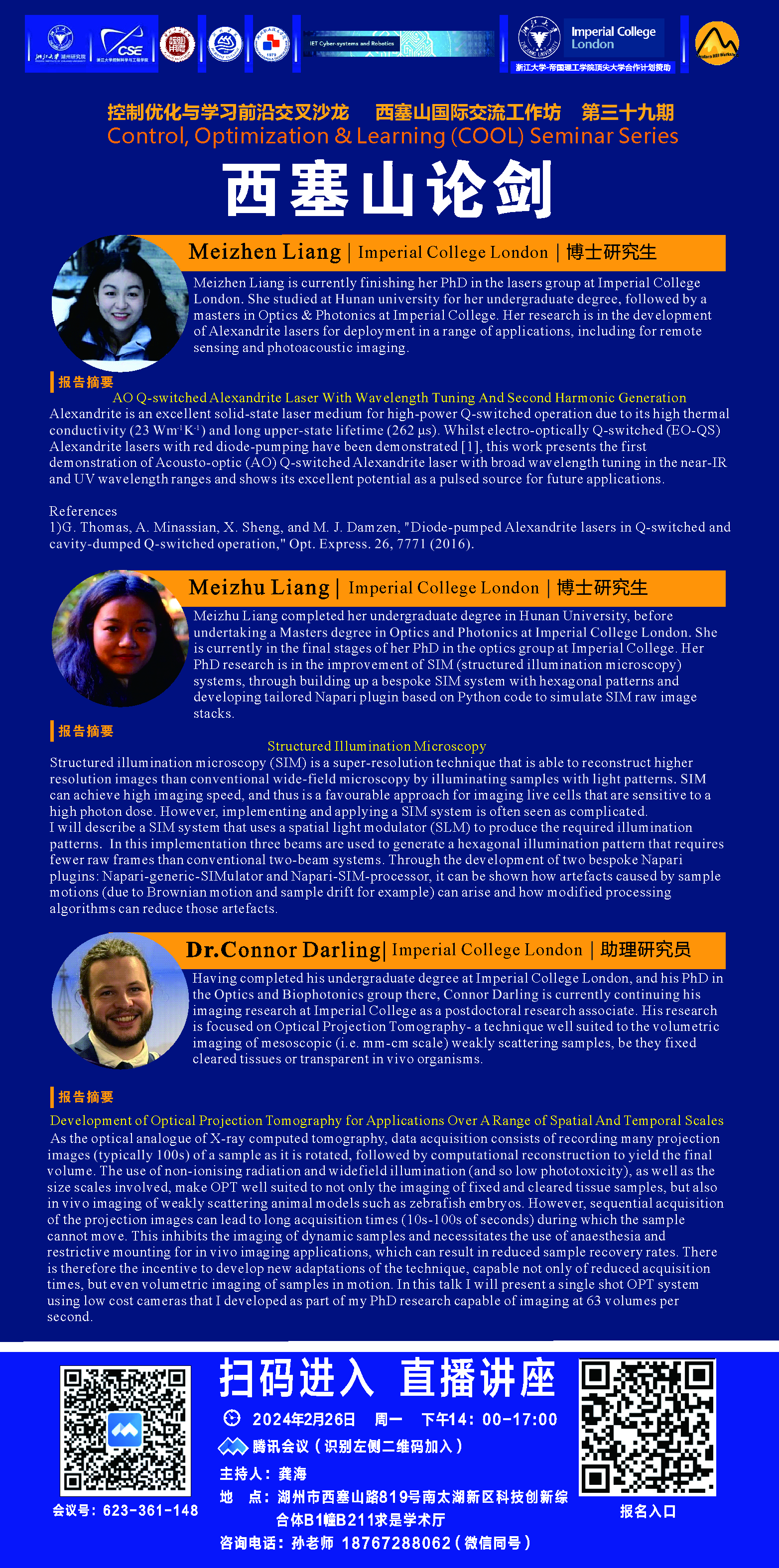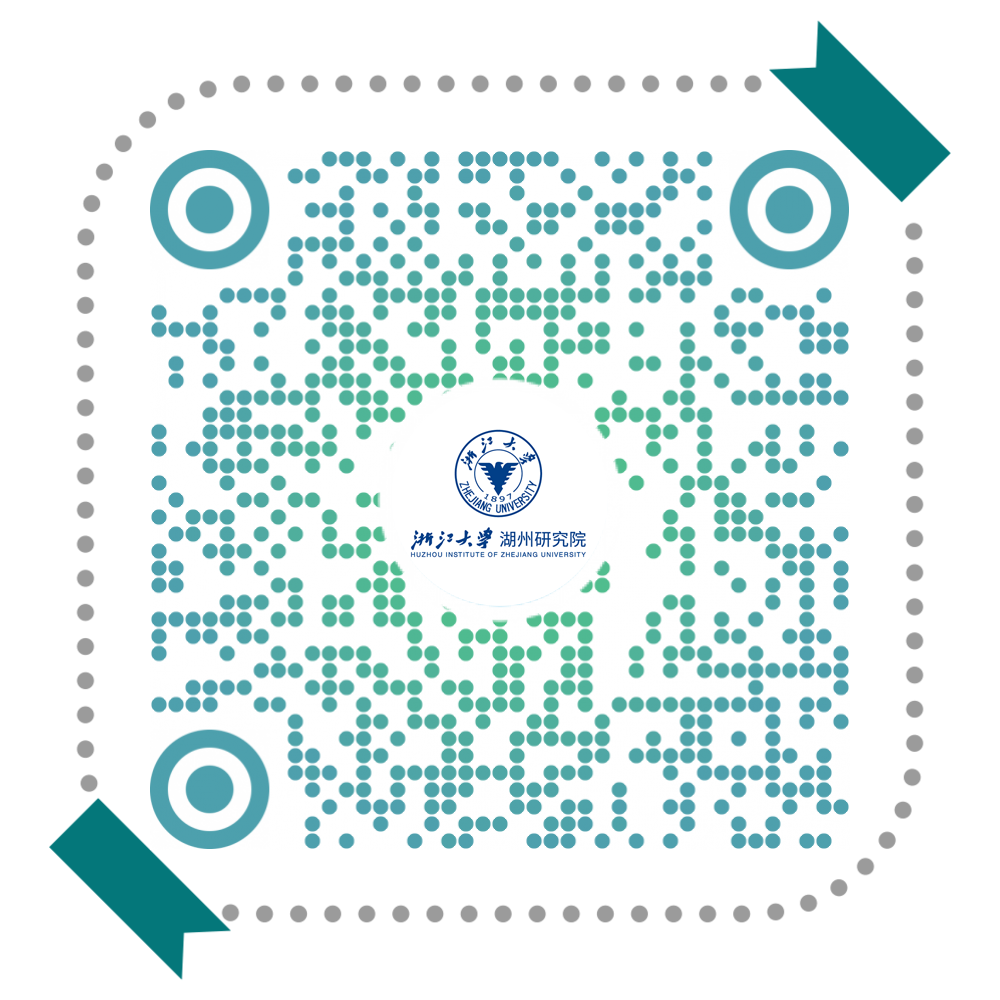
Meizhen Liang|Imperial College London|博士研究生
Meizhen Liang is currently finishing her PhD in the lasers group at Imperial College London. She studied at Hunan university for her undergraduate degree, followed by a masters in Optics & Photonics at Imperial College. Her research is in the development of Alexandrite lasers for deployment in a range of applications, including for remote sensing and photoacoustic im aging.
报告摘要
AO Q-switched Alexandrite Laser With Wavelength Tuning And Second Harmonic Generation.
Alexandrite is an excellent solid-state laser medium for high-power 0-switched operation due to its high thermal conductivity (23 Wm'K') and long upper-state lifetime (262 μs).Whilst electro-optically Q-switched (EO-QS) Alexandrite lasers with red diode-pumping have been demonstrated [1], this work presents the first
demonstration of Acousto-optic (AO)Q-switched Alexandrite laser with broad wavelength tuning in the near-IR and UV wavelength ranges and shows its excellent potential as a pulsed source for future applications.
References
1) G.Thomas, A. Minassian,X.Sheng, and M.J. Damzen."Diode-pumped Alexandrite lasers in Q-switched and cavity-dumped Q-switched operation," Opt.Express.26, 7771(2016).
Meizhu Liang| Imperial College London |博士研究生
Meizhu Liang completed her undergraduate degree in Hunan University,before
undertaking a Masters degree in Optics and Photonics at Imperial College London. She is currently in the final stages of her PhD in the optics group at Imperial College.Her PhD research is in the improvement of SIM (structured illumination microscopy) systems, through building up a bespoke SIM system with hexagonal patterns and developing tailored Napari plugin based on Python code to simulate SIMraw image stacks.
报告摘要
Structured Illumination Microscopy
Structured illumination microscopy (SIM) is a super-resolution technique that is able to reconstruct higher resolution images than conventional wide-field microscopy by illuminating samples with light patterns.SIM can achieve high imaging speed, and thus is a favourable approach for imaging live cells that are sensitive to a high photon dose. However, implementing and applying a SIM system is often seen as complicated.
I will describe a SIM system that uses a spatial light modulator (SLM) to produce the required illumination
patterns. In this implementation three beams are used to generate a hexagonal illumination pattern that requires fewer raw frames than conventional two-beam systems. Through the development of two bespoke Napari
plugins:Napari-generic-SIMulator and Napari-SIM-processor, it can be shown how artefacts caused by sample motions (due to Brownian motion and sample drift for example) can arise and how modified processing algorithms can reduce those artefacts.
Dr.Connor Darling| Imperial College London | 助理研究员
Having completed his undergraduate degree at Imperial College London,and his PhD in the Optics and Biophotonics group there, Connor Darling is currently continuing his imaging research at Imperial College as a postdoctoral research associate.His research is focused on Optical Projection Tomography- a technique well suited to the volumetric imaging of mesoscopic (i.e.mm-cm scale) weakly scattering samples, be they fixed cleared tissues or transparent in vivo organisms.
报告摘要
Development of Optical Projection Tomography for Applications Over ARange of Spatial And Temporal Scales
As the optical analogue of X-ray computed tom ography, data acquisition consists of recording many projection images (typically 100s) of a sample as it is rotated, followed by computational reconstruction to yield the final volume. The use of non-ionising radiation and widefield illumination (and so low phototoxicity), as well as the size scales involved, make OPT well suited to not only the imaging of fixed and cleared tissue samples, but also in vivo imaging of weakly scattering animal models such as zebrafish embryos.However, sequential acquisition of the projection images can lead to long acquisition times(10s-100s of seconds) during which the sample cannot move. This inhibits the imaging of dynamic samples and necessitates the use of anaesthesia and
restrictiv e mounting for in vivo imaging applications, which can result in reduced sample recovery rates.There is therefore the incentive to develop new adaptations of the technique, capable not only of reduced acquisition times, but even volumetric imaging of samples in motion. In this talk I will present a single shot OPT system using low cost cameras that I developed as part of my PhD research capable of imaging at 63 volumes per second.





